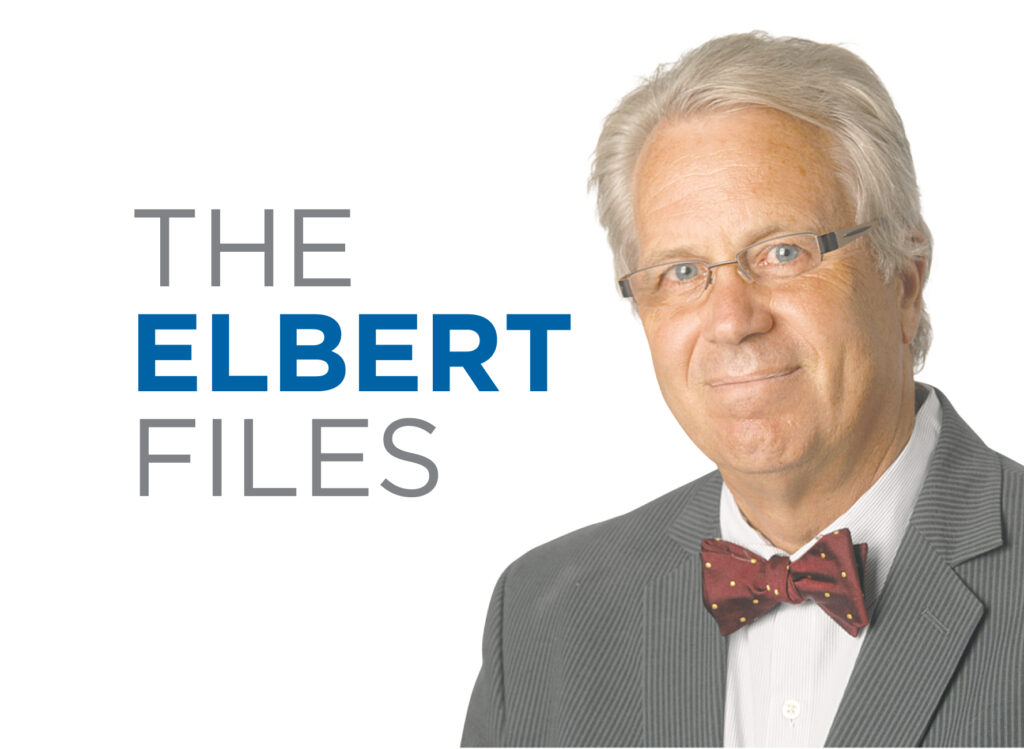The Elbert Files: Stopping smoking

I stopped smoking for the third, and nearly final, time on Sept. 23, 1973.
Two previous attempts at quitting had resulted in brief periods of abstention followed by increased voracity.
I picked up the habit as a freshman at Iowa State University in 1965 when I spent more time playing cards in the Memorial Union than I did in class.
Back then, college students were allowed to smoke in class. Women carried mini ashtrays, golf-ball-sized containers with lids, which they would pull from their purses and pretty much fill by the end of an hourlong lecture.
As dumb as this sounds, I took up smoking to learn how to inhale marijuana smoke; not that I smoked much pot in college.
In fact, I didn’t really enjoy getting high on marijuana. It made me paranoid and withdrawn. My drug of choice was alcohol, which made me happy and more outgoing.
During the 1960s, they were starting to publicize the health risks of cigarettes. I was aware of those concerns, and the first brand I smoked was Kent. I vaguely remember something about the brand’s filter, and Wikipedia, the online encyclopedia, confirms that Kent “widely touted its ‘famous micronite filter’” during the 1950s.
Much later, we learned Micronite filters contained a form of asbestos that was more deadly than nicotine. Wikipedia said Kent quietly quit using asbestos filters in 1956, roughly a decade before I started smoking. But they were still promoting the health aspects of their filters.
While I was still in college, I switched to Tareyton, a brand that advertised an “activated charcoal filter” that was “recessed.” (When I looked up Tareyton in Wikipedia, the most interesting thing was that in 1966 a young Martha Stewart appeared in a print ad for the brand.)
I started smoking Marlboros my senior year. Four years later, after having quit twice, I was smoking three packs a day.
In 1972, I got a job as a reporter at the Davenport Times Democrat.
Like all newspapers back then, smoking was a long-standing part of newsroom culture. Most reporters could not write a story if there wasn’t a lit cigarette within reach. Waste-basket fires were so common that little attention was paid unless flames actually leaped out of the basket.
The Times had an all-newsroom brunch one Saturday in September 1973. The brunch included considerable drinking and was followed by an afternoon of watching football at a favorite pub. By evening, we’d moved to an apartment where more liquor was consumed, including a bottle of ouzo, a Greek liquor, of which I had way too much.
While emptying my stomach of ouzo, I ruptured a blood vessel in my throat.
I assumed the problem was my lungs, and the next day I swore off cigarettes.
I took it one day at a time. As an incentive, for every day I did not smoke I set aside a 50-cent piece, which was the price of a pack of cigarettes.
The first two weeks were the worst. My coffee consumption at work went through the roof, but every night I placed a 50-cent piece in my sock drawer, eventually accumulating more than a year’s worth of Kennedy half dollars.
A couple of months before I quit smoking, I’d started running. After my first smoke-free week, I ran a mile without stopping; before I could barely run two blocks.
I did not have another cigarette until 2000, when a friend celebrated her 40th birthday. The conversation that night got around to smoking and how long it had been since some of us had quit.
The group’s enabler offered to buy a pack, so we could remember what it was like to smoke.
I tried one cigarette and got an incredible buzz.
The next summer on RAGBRAI – where I was a driver/golfer, not a rider – I had a few more, but was able to limit my smoking to the week of the bike ride.
Back problems ended my RAGBRAI involvement, and I haven’t smoked since.





